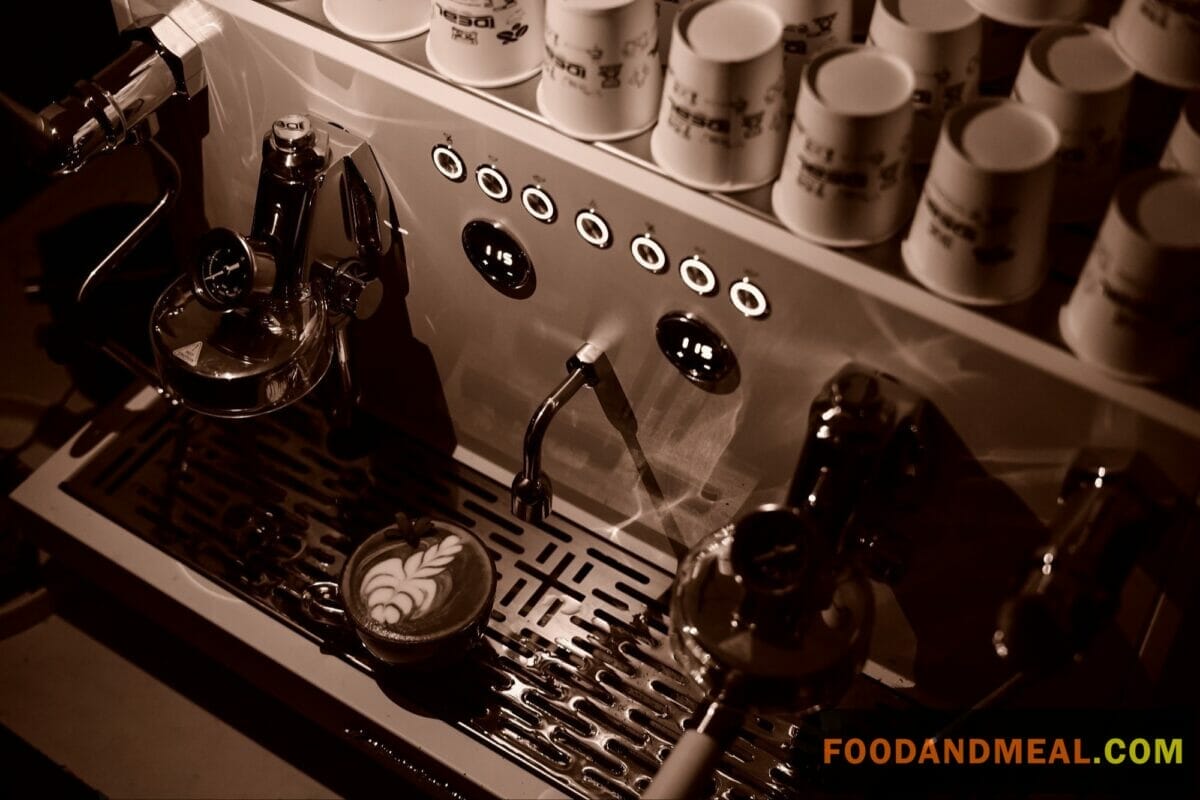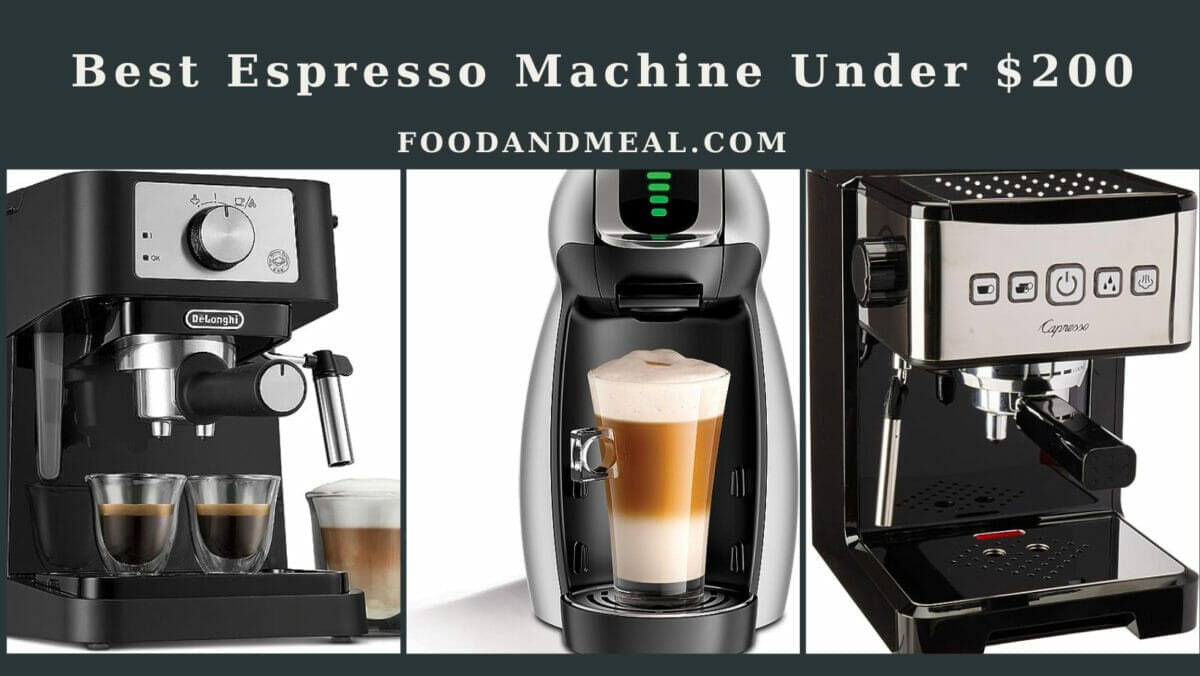If you share my passion for coffee, you understand the importance of beginning your day with a freshly brewed cup of joe. Making sure you always have access to that perfect cup can be achieved by linking your coffee machine to a water line. This uncomplicated method eradicates the requirement of manually refilling your machine with water, resulting in a smooth and uninterrupted brewing encounter. Within this comprehensive walkthrough, Food and Meal will lead you through the step-by-step procedure of establishing a connection between your coffee machine and a water line.
Advantages of Linking Your Coffee Machine to a Water Line
Before we delve into the specifics, let’s uncover the perks associated with connecting your coffee machine directly to a water line. The primary benefit is a substantial time and effort savings. Say goodbye to the chore of refilling the water reservoir each time you desire a cup of coffee. Through a direct water line connection, your coffee machine will autonomously access water whenever necessary, ensuring an uninterrupted flow.

Another advantage lies in the consistent quality of water. The taste and quality of tap water can fluctuate, potentially impacting the flavor of your brewed coffee. By hooking up your coffee machine to a water line furnished with a water filter, you’re poised to savor a reliably superb coffee taste with each brew.
Furthermore, the act of connecting your coffee machine to a water line mitigates the risk of water depletion mid-brew. This proves especially advantageous in bustling settings like offices or cafes, where a constant coffee supply stands as a pivotal necessity.
Things to consider before connecting your coffee machine to a water line
Before embarking on the journey of connecting your coffee machine to a water line, take a moment to consider several key factors.
First and foremost, it’s essential to review the warranty terms of your coffee machine. Some manufacturers might nullify the warranty if you make modifications like connecting it to a water line. To ensure you don’t compromise your warranty, carefully peruse the user manual or reach out to the manufacturer for clarification before proceeding.
Next, evaluate the positioning of your coffee machine. Ensuring a nearby water source is crucial, as the machine will require a connection to a water line. Should there be no water line in close proximity, enlisting the expertise of a professional plumber to install one could become necessary.
Lastly, take into account the water pressure prevailing in your locale. Coffee machines generally operate optimally within specific water pressure ranges. Should your water pressure be excessively high or low, the installation of a pressure regulator might be required to guarantee the proper functioning of the machine.
What You Need To Connect Your Coffee Machine To A Water Line?
Establishing a seamless connection between your coffee machine and a water line guarantees an uninterrupted flow of fresh, filtered water. To accomplish this, gather the following essential components:
| Coffee machine with a water line connection point | Consult your machine’s user manual or get in touch with the manufacturer to locate the specific connection point on your coffee machine. |
| Water line kit | Procure a water line kit that aligns with the compatibility of your coffee machine. These kits usually encompass a water line, fittings, and connectors designed for this purpose. |
| Adjustable wrench | Have an adjustable wrench on hand, as you’ll require this tool to securely fasten and tighten the fittings in place. |
| Teflon tape | Utilize Teflon tape to establish a watertight seal between the fittings. Before attaching them, wrap a few layers of Teflon tape around the threaded ends of the fittings. |
| Water pressure regulator | In cases where your water pressure is either too high or too low, installing a water pressure regulator may be necessary to guarantee the coffee machine functions as intended. |
How to Establish a Water Line Connection for Your Coffee Machine
Step 1: Gather Essential Tools and Materials
Before you embark on the process of connecting your coffee machine to a water line, ensure you have all the necessary tools and materials in place. These include:
- Coffee machine with a designated water line connection point: Refer to your machine’s user manual or reach out to the manufacturer to pinpoint the exact connection point.
- Water line kit: Acquire a compatible water line kit containing a water line, fittings, and connectors.
- Adjustable wrench: This tool is crucial for securely fastening and tightening fittings.
- Teflon tape: Employ Teflon tape to establish a waterproof seal by wrapping it around threaded fittings.
Step 2: Locate the Water Line Connection Point
After gathering your tools and materials, identify the water line connection point on your coffee machine. Check your user manual or consult the manufacturer for specific instructions.
Typically situated at the rear or bottom of the machine for convenient access, this connection point will play a pivotal role in ensuring proper and efficient installation.
Step 3: Power Off and Disconnect the Coffee Machine
Before proceeding, ensure your coffee machine is powered off and disconnected from the power source. This precautionary measure prevents electrical mishaps while working with both water and electrical components.

Step 4: Establish the Water Line Connection
Now that you’ve identified the connection point and powered off your coffee machine, it’s time to establish the water line connection. Follow these steps:
1. Attach one end of the water line to the coffee machine’s connection point, using an adjustable wrench to securely tighten the fitting.
2. Connect the other end of the water line to the water supply. If a dedicated line exists, connect directly. Otherwise, use a tee fitting to tap into an existing water line. Once again, employ an adjustable wrench for a secure fit.
3. To prevent leaks, wrap Teflon tape around threaded ends, ensuring a watertight seal.
Step 5: Test the Connection and Check for Leaks
Having established the water line connection, it’s time to test its integrity. Gradually turn on the water supply and observe closely for any indications of leakage. Should any leaks occur, tighten the fittings further or reapply Teflon tape if required.
Step 6: Adjust Water Line Pressure (If Necessary)
Depending on your circumstances, water line pressure might require adjustments for optimal functionality. Should you encounter issues with water flow or brewing, refer to your user manual or manufacturer for guidance on adjusting the pressure.
Step 7: Reconnect and Power On the Coffee Machine
Once you’ve tested the connection and addressed water pressure if needed, reconnect your coffee machine to the power source and turn it on. With the water line successfully connected, your coffee machine is primed to brew fresh, delightful cups of coffee hassle-free.
Troubleshooting Common Issues During Coffee Machine Water Line Connection
Although the process of connecting your coffee machine to a water line is generally straightforward, you might encounter some common issues. To assist you, here are a few troubleshooting tips:
- Leaks: If you detect leaks, initially confirm that fittings are adequately tightened. Should leaks persist, examine the Teflon tape to verify its seal. If needed, reapply the tape to establish a secure seal.
- Low Water Flow: In cases of reduced water flow or subpar brewing performance, assess the water line pressure. Make adjustments as required based on your machine’s specifications.
- No Water Flow: If water flow doesn’t occur post-connection, inspect the water supply valve. Ensure it’s fully open and free from any potential obstructions within the line. Maintenance and Cleaning Recommendations for Your Water Line-Connected Coffee Machine
With your coffee machine successfully linked to a water line, it’s crucial to follow maintenance and cleaning practices to maintain its efficiency. Consider these essential tips:
- Cleaning the Water Line: Regularly examine the water line’s condition and clean it as needed. Flush out accumulated impurities or debris to maintain optimal functionality.
- Inspecting Fittings: Periodically check water line and fitting connections for wear or damage. Promptly replace components that show signs of deterioration to prevent leaks and related issues.
- Softening Hard Water: If you’re dealing with hard water, contemplate using a water softener. This will mitigate the buildup of limescale over time, enhancing the longevity of your machine’s performance.
By adhering to these uncomplicated measures, you’ll ensure your coffee machine remains seamlessly connected to the water line, guaranteeing the availability of fresh coffee whenever desired.
FAQs about Connecting a Coffee Machine to a Water Line
1. Why would I want to connect my coffee machine to a water line? Connecting your coffee machine to a water line eliminates the need to manually refill the water reservoir, ensuring a continuous supply of water for brewing. It’s a convenient option for businesses or individuals who brew large volumes of coffee regularly.
2. Can any coffee machine be connected to a water line? Not all coffee machines are designed to be connected to a water line. Check the manufacturer’s specifications and user manual to confirm whether your specific coffee machine model supports a direct water line connection.
3. What do I need to connect my coffee machine to a water line? You typically need a water line connection kit, which includes hoses, fittings, and possibly a water filter. Ensure the kit is compatible with your coffee machine and follows local plumbing regulations.
4. Do I need a plumber to connect my coffee machine to a water line? While some people prefer professional installation, many water line connection kits are designed for easy installation by users. If you are comfortable with basic plumbing tasks, you may be able to connect the coffee machine to the water line yourself by following the provided instructions.
5. Can I connect any type of water line to my coffee machine? It’s essential to use a water line that is suitable for the coffee machine and complies with local plumbing codes. Copper and flexible braided lines are commonly used, but check the manufacturer’s recommendations for the best type of water line to use.
6. Do I need a water filter when connecting my coffee machine to a water line? Some coffee machines come with built-in water filters, while others may require a separate water filter in the line. Using a water filter can improve the taste of the coffee by removing impurities and minerals. Check the coffee machine’s manual for recommendations.
7. How often should I clean the water line of my coffee machine? Regular maintenance is crucial to ensure the cleanliness and efficiency of the water line. Follow the manufacturer’s guidelines for cleaning, and consider flushing the water line periodically to prevent buildup of mineral deposits and contaminants.
8. What precautions should I take when connecting a coffee machine to a water line? Turn off the coffee machine and disconnect it from the power source before attempting any installation. Follow the manufacturer’s instructions carefully, and check for leaks after connecting the water line to avoid potential water damage.
9. Can I still use the coffee machine without connecting it to a water line? Yes, even if your coffee machine is capable of a direct water line connection, you can still use it by manually filling the water reservoir. This allows flexibility if you prefer not to connect it or if the machine is moved to a location without access to a water line.
10. What should I do if I encounter issues with the water line connection? If you experience problems such as leaks or inconsistent water flow, refer to the user manual for troubleshooting tips. If issues persist, consider seeking assistance from the manufacturer’s customer support or consulting a professional plumber.

15 December ·
Culinary Conversations: Unveiling the Symphony of Electric Egg Cookers
By Food And Meal
Welcome to Food And Meal's Culinary Conversations, where we embark on a flavorful journey exploring the artistry and innovation behind electric egg cookers. Join us as we delve into the seamless simplicity of the Dash, the fusion of capacity and consistency in the Bella Double Tier, the culinary opus of efficiency and versatility with the Elite Gourmet, the ode to effortless grace and multifunctionality in the Hamilton Beach, and the epitome of convenience blended with elegance in the Chefman Electric Egg Cooker Boiler. Each appliance tells a unique tale of precision, versatility, and user experience, transforming breakfast preparation into an art form. Discover the narratives behind these culinary marvels, and stay tuned for more as we elevate everyday cooking experiences. Thank you for tuning in to Food And Meal's Culinary Conversations. Until next time, happy cooking!
How To Connect Coffee Machine To Water Line? - foodandmeal.com
If you share my passion for coffee, you understand the importance of beginning your day with a freshly brewed cup of joe. Making sure you always have access to that perfect cup can be achieved by linking your coffee machine to a water line. This uncomplicated method eradicates the requirement of manually refilling your machine with water, resulting in a smooth and uninterrupted brewing encounter. Within this comprehensive walkthrough, Food and Meal will lead you through the step-by-step procedure of establishing a connection between your coffee machine and a water line.


